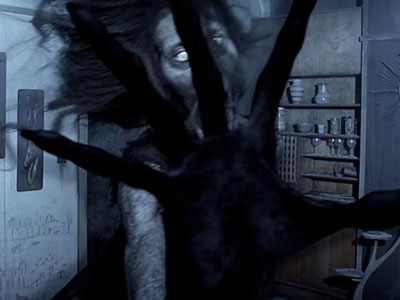Cinematography
What is cinematography?
Cinematography is the term that is used to describe the various types of techniques that the camera can do whilst in the process of making a film. It also looks at the way the shot has been framed, the movement of the camera and the angle it is taken from. All these different elements give a different representation of what is happening in the film, this creates different kinds of responses from the audience. I will go on to show examples of camera shots and angles from thriller movies.Extreme Long-shot
- An extreme long shot is a stationary shot which shows a character from head to toe but it also shows part of the scenery and surroundings.
- A XLS is used to portray where the character is and to help the audience visualize the characters body language

Long Shot

- A long shot is also a stationary show which shows the body from just head to toe.
- It allows you to see the shot in more detail and closer up than a XLS
Even though there is a table blocking there legs you can see the longshot has been used so all the characters are seen and so that the audience can admire the dialect going on between them all in detail.
Medium Shot.
- The medium shot is used to capture the waist and above.
- Using this shot allows you to capture the emotion of the person in the film.
- A close up is used to capture every single little bit of emotion on a characters face
- The emotion conveyed by the character may be passed on to the audience if shot well enough
- It can also be used to film intense or emotional conversations
- Using a close up shot in that situation would build up a response from your audience

Extreme Close Up.
- An extreme close up is from the head and above
- It usually focuses on main features and expressions of the face.
- There is emphasis on detail
Establishing Shot.
- It shows a lot of detail in the beginning scenes of thrillers
- It is usually at the start of the film or scene
High Angle
- High angle is when the camera is filming and it is looking down on the character. This makes the character look small and as if they are of low status.
Low Angle
- Low Angle is when the camera is filming and it is facing upwards toward the person. This makes the person appear bigger and that they have a high status and that they are superior.
Panning Shot.
- This is when the camera moves across the scene whilst it is filming
- There is no breaks and editing
- This is when the camera moves up and down
- It allows you to see all the detailing in the scene being filmed
- This is when the camera is on a crane
- It allows it to move around very smoothly and get a shot without breaks
- The movement of the camera is very flexible
- This is to capture emotion
- It also uses the zooming out to get away from tense scenarios
- This is when it looks like it is from the persons point of view.
- It adds to the effect of the film
- It can add to the response of the audience
The research I have done has helped me realise more about thrillers. It has shown me all the different shots I could involve in the two minute thriller I have to create. I have learnt that all close up shots are good to show emotion that is being conveyed. I have to use longshots and establishing shots to make sure all the detailing I want to show is being seen. All the shots and angles I chose to use will all result to my audience response, so I have to be really careful when picking them.

Again Emine, some accurate definitions here with some good images to support your ideas.
ReplyDeleteTo improve;
-some of your early images do not match the definitions (ES, LS and MS). Look to change these please.
-include some thriller film images to show representation of angles.
-in your conclusion, can you think of some examples of cinematography you plan to use?